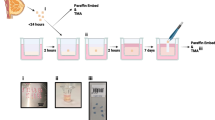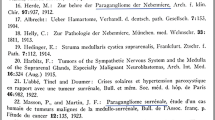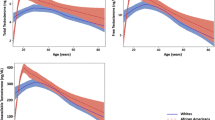Abstract
Prostate cancer is the leading form of newly diagnosed cancer cases in men in the United States. However, the molecular mechanisms contributing to the initiation, progression and ultimate development of metastatic and androgen independent disease are poorly understood. This is due in part to the difficulty in obtaining clinical samples representing early disease and the lack of animal models that recapitulate the full spectrum of the clinical disease. To this end we have developed and characterized the Transgenic Adenocarcinoma of Mouse Prostate (TRAMP) animal model that expresses the oncogene SV40 T antigen specifically in the epithelium of the prostate. TRAMP develops spontaneous autochthonous prostate cancer compelte with distant site metastasis and can progress to androgen independent disease. Changes in the fibroblast growth factor (FGF) axis and the insulin-like growth factor (IGF) axis have been examined during prostate cancer progression utilizing the TRAMP model and these data generally support observations reproted in the clinical disease. Moreover, we report novel changes in the FGF axis and IGF axis utilizing TRAMP. Thus, TRAMP can be used as a potent tool in understanding the mechanism of prostate cancer initiation and progression.
Similar content being viewed by others
References
Greenberg NM, DeMayo FJ, Sheppard PC, Barrios R, Lebovitz R, Finegold M, Angelopolou R, Dodd JG, Duckworth ML, Rosen JM, Matusik RJ: The rat probasin gene promoter directs hormonally and developmentally regulated expression of a heterologous gene specifically to the prostate in transgenic mice. Mol Endocrinol 8: 230-239, 1994
Greenberg NM, DeMayo F, Finegold MJ, Medina D, Tilley WD, Aspinall JO, Cunha GR, Donjacour AA, Matusik RJ, Rosen JM: Prostate cancer in a transgenic mouse. Proc Natl Acad Sci 92: 3439-3443, 1995
Gingrich JR, Barrios RJ, Morton RA, Boyce BF, DeMayo FJ, Finegold MJ, Angelopoulou R, Rosen JM, Greenberg MM: Metastatic prostate cancer in a transgenic mouse. Canc Res 56: 4096-4102, 1996
Gingrich JR, Barrios RJ, Kattan MW, Nahm HS, Finegold MJ, Greenberg NM: Androgen-independent prostate cancer progression in theTRAMPmodel. Canc Res 57: 4687-4691, 1997
Ohbayashi N, Hoshikawa M, Kimura S, Yamasaki M, Fukui S, Itoh N: Structure and expression of the mRNA encoding a novel fibroblast growth factor, FGF-18. J Biol Chem 273: 18161-18164, 1998
McKeehan WL, Wang F, Kan M: The heparan sulfate-fibroblast growth factor family: Diversity of structure and function. Prog Nucleic Acid Res Mol Biol 59: 135-176, 1998
Shi E, Kan M, Xu J, Wang F, Hou J, McKeehan W: Control of FGF receptor kinase signal transduction by heterodimerization of combinatorial splice variants. Mol Cell Biol 13: 3907-3918, 1993
Mohammadi M, Honegger AM, Rptom D, Fischer R, Bellot F, Li W, Dionne CA, Jaye M, Rubinstein M, Schlessinger J: A tyrosine-phosphorylated carboxy-terminal peptide of the fibroblast growth factor (Flg) is a binding site for the SH2 domain of phospholipase C-gamma 1. Mol Cell Biol 11: 5068-5078, 1991
Selfors LM, Schutzman JL, Borland CZ, Stern MJ: soc-2 encodes a leucine-rich repeat protein implicated in fibroblast growth factor receptor signaling. PNAS 95: 6903-6908, 1998
Kouhara H, Hadari YR, Spivak-Kroizman T, Schilling J, Bar-Sagi D, Lax I, Schlissinger J: A lipid-anchored Grb2-binding protein that links FGF-receptor activation to the ras/MAPK signalling pathway. Cell 89: 693-702, 1997
Vincent S, Wilson R, Coelho C, Affolter M, Leptin M: The Drosophila protein Dof is specifically required for FGF signaling. Mol Cell 2: 515-525, 1998
Kokel M, Borland CZ, DeLong L, Horvitz HR, Stern MJ: clr-1 encodes a receptor tyrosine phosphatase that negatively regulates an FGF receptor signaling pathway in Caenorhabditis elegans. Gen Develop 12: 1425-1437, 1998
MacArthur CA, Lawshe A, Xu J, Santos-Ocampo S, Heikinheimo M, Chellaiah A, Ornitz D: FGF-8 isoforms activate receptor splice forms that are expressed in mesenchymal regions of mouse development. Development 121: 3603-3613, 1995
Carstens RP, Eaton JV, Krigman HR, Walther PJ, Garcia-Blanco MA: Alternative splicing of fibroblast growth factor receptor 2 (FGF-R2) in human prostate cancer. Oncogene 15: 3059-3065, 1997
Cunha GR, Donjacour AA, Cooke PS, Mee S, Bigsby RM, Higgins, SJ, Sugimura Y: The endocrinology and developmental biology of the prostate. Endocrine Rev 8: 338-363, 1987
Cunha GR, Alarid ET, Turner T, Donjacour AA, Boutin EL, Foster BA: Normal and abnormal development of the male urogenital tract: Role of androgens, mesenchymalepithelial interactions and growth factors. J Andrology 13: 465-475, 1992
Cunha GR, Foster BA, Sugimura Y, Hom YK: Keratinocyte growth factor as mediator of mesenchymal-epithelial interactions in the development of androgen target organs. Sem Cell Develop Biol 7: 203-210, 1996
Wilson J, George F, Griffin J: The hormonal control of sexual development. Science 211: 1278-1284, 1981
Yan G, Fukabori Y, Nikolaropoulos S, Wang F, McKeehan WL: Heparin-binding keratinocyte growth factor is a candidate stromal to epithelial cell andromedin. Mol Endocrinol 6: 2123-2128, 1992
Sugimura Y, Foster BA, Hom YH, Lipschutz JH, Rubin JS, Finch PW, Aaronson SA, Hayashi N, Kawamura J, Cunha GR: Keratinocyte growth factor (KGF) can replace testosterone in the ductal branching morphogenesis of the rat ventral prostate. Int J Dev Biol 40: 941-951, 1996
Fasciana C, van der Made A, Faber P, Trapman J: Androgen regulation of the rat keratinocyte growth factor (KGF/FGF-7) promoter. Biochem Biophys Res Com 220: 858-863, 1996
McGarveyTW, Stearns ME: Keratinocyte growth factor and receptor mRNA expression in benign and malignant human prostate. Exper Mol Pathol 63: 52-62, 1995
Yan G, Fukabori Y, McBride G, Nikolaropolous S, McKeehan WL: Exon switching and activation of stromal and embryonic fibroblast growth factor (FGF) - FGF receptor genes in prostate epithelial cells accompany stromal independence and malignancy. Mol Cell Biol 13: 4513-4522, 1993
Feng S, Wang F, Matsubara A, Kan M, McKeehan WL: Fibroblast growth factor receptor 2 limits and receptor 1 accelerates tumorigenicity of prostate epithelial cells. Canc Res 57: 5369-5378, 1997
Matsubara A, Kan M, Feng S, McKeehan WL: Inhibition of growth of malignant rat prostate tumor cells by restoration of fibroblast growth factor receptor 2. Canc Res 58: 1509-1514, 1998
Jones JI, Clemmons DR: Insulin-like growth factors and their binding proteins: Biological actions. Endocrine Reviews 16: 3-34, 1995
LeRoith D, Werner H, Beitner-Johnson D, Roberts CT: Molecular and cellular aspects of the insulin-like growth factor I receptor. Endocrine Reviews 16: 143-163, 1995
White MF, Kahn RC: The insulin signaling system. J Biol Chem 269: 1-4, 1994
Morrione A, Valentinis B, Li S, Ooi JYT, Margolis B, Baserga R: Grb 10: A new substrate of the insulin-like growth factor I receptor. Canc Res 56: 3165-3167, 1996
Bates P, Fisher R, Ward A, Richardson L, Hill DJ, Graham CF: Mammary cancer in transgenic mice expressing insulin-like growth factor II. Brit J Canc 72: 1189-1193, 1995
Rajaram S, Baylink DJ, Mohan S: Insulin-like growth factor-binding proteins in serum and other biological fluids: Regulation and functions. Endocrine Reviews 18: 801-831, 1997
Collett-Solberg PF, Cohen P: The role of the insulin-like growth factor binding proteins and the IGFBP proteases in modulating IGF action. Endocrinol Metab Clin North Am 25: 591-614, 1996
Cohen P, Peehl DM, Lamson G, Rosenfeld RG: Insulin-like growth factors (IGFs), IGF receptors, and IGF-binding proteins in primary cultures of prostate epithelial cells. J Clin Endocrinol Metab 73: 401-407, 1991
Cohen P, Peehl DM, Baker B: Insulin-like growth factor axis abnormalities in prostatic stromal cells from patients with benign prostatic hyperplasia. J Clin Endocrinol Metab 79: 1410-1415, 1994
Peehl DM, Cohen P, Rosenfeld RG: The role of insulin-like growth factors in prostate biology. J Androl 17: 2-4, 1996
Tennant MK, Thrasher JB, Twomey PA, Drivdahl RH, Birnbaum RS, Plymate, SR: Protein and messenger ribonucleic acid (mRNA) for the type 1 insulin-like growth factor (IGF) receptor is decreased and IGF-II mRNA is increased in human prostate carcinoma compared to benign prostate epithelium. J Clin Endocrinol Metab 81: 3774-3782, 1996
Tennant MK, Thrasher JB, Twomey PA, Birnbaum RS, Plymate SR: Insulin-like growth factor-binding protein-2 and-3 expression in benign human prostate epithelium, prostate intraepithelial neoplasia, and adenocarcinoma of the prostate. J Clin Endocrinol Metab 81: 411-420, 1996
Peehl DM, Cohen P, Rosenfeld RG: The insulin-like growth factor system in the prostate. World J Urol 13: 306-311, 1995
Figueroa JA, Lee AV, Jackson JG, Yee D: Proliferation of cultured human prostate cancer cells is inhibited by insulin-like growth factor (IGF) binding protein-1: Evidence for an IGF-II autocrine growth loop. J Clin Endocrinol Metab 80: 3476-3482, 1995
Pietrzkowski Z, Mulholland G, Gomella L, Jameson BA, Wernicke D, Baserga R: Inhibition of growth of prostate cancer cell lines by peptide analogues of insulin-like growth factor 1. Canc Res 53: 1102-1106, 1993
Iwamura M, Sluss PM, Casamento JB, Cockett AT: Insulin-like growth factor I: Action and receptor characterization in human prostate cancer cell lines. Prostate 22: 243-252, 1993
Burfeind P, Chernicky CL, Rininsland F, Ilan J, Ilan J: Anti-sense RNA to the type I insulin-like growth factor receptor suppresses tumor growth and prevents invasion by rat prostate cancer cells in vivo. Proc Natl Acad Sci 93: 7263-7268, 1996
Plymate SR, Tennant M, Birnbaum RS, Thrasher JB, Chatta G, Ware JL: The effects on the insulin-like growth factor system in human prostate epithelial cells of immortalization and transformation by Simian Virus-40 T antigen. J Clinical Endocrinol and Metab 81: 3709-3716, 1996
Plymate SR, Bae VL, Maddison L, Quinn LS, Ware JL: Reexpression of the type 1 insulin-like growth factor receptor inhibits the malignant phenotype of simian virus 40 T antigen immortalized human prostate epithelial cells. Endocrinology 138: 1728-1735, 1997
Chan JM, Stampfer MJ, Giovannucci E, Gann PH, Ma J, Wilkinson P, Hennekens CH, Pollak M: Plasma insulin-like growth factor-I and prostate cancer risk: A prospective study. Science 279: 563-566, 1998
Wolk A, Mantzoros CS, Andersson S-O, Bergstrom R, Signorello LB, Lagiou P, Adami H-O, Trichopoulos D: Insulin-like growth factor-1 and prostate cancer risk: A population-based, case-control study. J Nat Canc Inst 90: 911-915, 1998
Mantzoros CS, Tzonou A, Signorello LB, Stampfer M, Trichopoulos D, Adami H-O: Insulin-like growth factor 1 in relation to prostate cancer and benign prostatic hyperplasia. Brit J Canc 76: 1115-1118, 1997
Cohen P: Serum insulin-like growth factor-I levels and prostate cancer risk - interpreting the evidence. J Nat Canc Inst 90: 876-879, 1998
Cohen P, Peehl DM, Stamey TA, Wilson KF, Clemmons DR, Rosenfeld RG: Elevated levels of insulin-like growth factor-binding protein-2 in the serum of prostate cancer patients. J Clin Endocrinol Metab 76: 1031-1035, 1993
Kanety H, Madjar Y, Dagan Y, Levi J, Papa MZ, Pariente C, Goldwasser B, Karasik A: Serum insulin-like growth factor-binding protein-2 (IGFBP-2) is increased and IGFBP-3 is decreased in patients with prostate cancer: Correlation with serum prostate-specific antigen. J Clin Endocrinol and Metab 77: 229-233, 1993
Thrasher BJ, Tennant MK, Twomey PA, Hansberry KL, Wettlaufer JN, Plymate SR: Immunohistochemical localization of insulin-like growth factor binding proteins 2 and 3 in prostate tissue: Clinical correlations. J Urol 155: 999-1003, 1996
Cohen P, Graves HC, Peehl DM, Kamarei M, Giudice LC, Rosenfeld RG: Prostate-specific antigen (PSA) is an insulin-like growth factor binding protein-3 protease found in seminal plasma. J Clin Endocrinol Metab 75: 1046-1053, 1992
Cohen P, Peehl DM, Graves HCB, Rosenfeld RG: Biological effects of prostate specific antigen as an insulin-like growth factor binding protein-3 protease. J Endocrinol 142: 407-415, 1994
Rittenhouse HG, Finlay JA, Mikolajczyk SD, Partin AW: Human kallikrein 2 (hK2) and prostate-specific antigen (PSA): Two closely related, but distinct, kallikreins in the prostate. Crit Rev Clin Lab Sciences 34: 1998
Oh Y, Muller HL, Lee D-Y, Fielder PJ, Rosenfeld RG: Characterization of the affinities of insulin-like growth factor (IGF)-binding proteins 1-4 for IGF-I, IGF-II, IGF-I/insulin hybrid, and IGF-I analogs, Endocrinology 132: 1337-1344, 1993
Author information
Authors and Affiliations
Rights and permissions
About this article
Cite this article
Foster, B.A., Kaplan, P.J. & Greenberg, N.M. Peptide Growth Factors and Prostate Cancer: New Models, New Opportunities. Cancer Metastasis Rev 17, 317–324 (1998). https://doi.org/10.1023/A:1006162410436
Issue Date:
DOI: https://doi.org/10.1023/A:1006162410436




